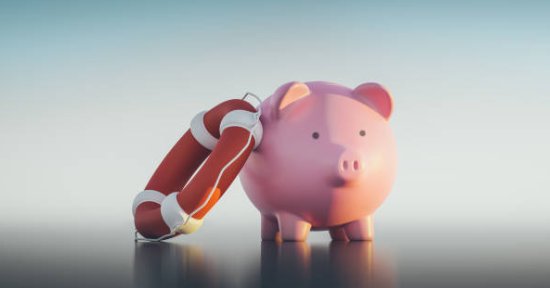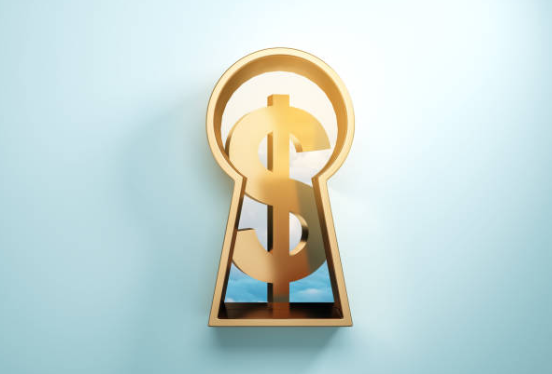How to Build an Emergency Fund and Why It’s Crucial
MANAGING MONEY
5 min read


Understanding the Importance of an Emergency Fund
An emergency fund is a financial safety net designed to cover unforeseen expenses that may arise unexpectedly, such as medical emergencies, job loss, or necessary repairs to one's home or vehicle. The unpredictability of life emphasizes the necessity of having a reserve of funds readily accessible. Statistics reveal that a significant number of Americans lack adequate savings to manage these sudden financial hurdles. According to recent surveys, approximately 40% of U.S. adults would struggle to cover an unexpected expense of $400, indicating a concerning trend in financial preparedness.
The ramifications of not having an emergency fund can be severe, often leading individuals to rely on high-interest debt options like credit cards or personal loans. This reliance can create a cycle of indebtedness that is challenging to escape. By establishing a dedicated emergency fund, individuals can mitigate the stress associated with unanticipated financial burdens. The comfort provided by having savings to fall back on not only offers essential financial security but also contributes positively to one's mental well-being. The peace of mind that accompanies a robust emergency fund can alleviate anxiety related to financial uncertainties.
An emergency fund can significantly influence one's overall financial health, promoting a proactive approach to personal finance. Having savings set aside empowers individuals to make more informed decisions, whether that means transitioning to a new job, tackling urgent repairs, or managing medical expenses. In this sense, an emergency fund is not merely a financial cushion; it represents a cornerstone of stability in uncertain times. Building this fund is an essential aspect of financial literacy and responsibility, underscoring the importance of preparing for life's unexpected challenges.
Assessing Your Financial Needs
Determining the right amount of money to set aside for an emergency fund is a crucial step that requires a careful evaluation of your personal financial situation. To start, examine your monthly expenses, which include fixed costs such as rent or mortgage payments, utilities, groceries, transportation, and insurance, as well as variable expenses that may fluctuate month-to-month. Calculating the total monthly expenditure provides a baseline for understanding how much you might need to cover essential costs when unexpected situations arise.
In addition to monthly expenses, consider any outstanding debts, such as credit cards, student loans, or personal loans. The ability to manage these obligations during a financial emergency can greatly influence the size of your emergency fund. For instance, if you have significant outstanding debts, it may be prudent to save more to ensure that you can continue making payments even in times of financial distress.
Another important factor to consider is the likelihood of specific emergencies based on your lifestyle and job stability. Individuals who work in unstable industries or have more significant health concerns might benefit from having a larger emergency fund, possibly targeting six to twelve months' worth of living expenses. Conversely, those with stable jobs and fewer financial responsibilities might manage with a fund that covers three months’ worth of expenses. Common advice suggests saving three to six months' worth of living costs, but individualized circumstances must always be taken into account.
Ultimately, assessing your financial needs is about creating a safety net that aligns with your unique situation. By carefully evaluating your expenses, debts, and lifestyle factors, you can establish an emergency fund that provides sufficient security during unforeseen events, enabling peace of mind and financial stability.
Strategies for Building Your Emergency Fund
Establishing an emergency fund is an essential aspect of financial planning. To effectively create this financial safety net, implementing various strategies can lead to rapid and manageable savings. One of the first steps is to set realistic savings goals. Consider calculating three to six months’ worth of essential living expenses as a benchmark. This approach provides a clear target and makes the process less overwhelming.
Another effective method is to automate your savings. By setting up automatic transfers from your checking account to your emergency fund on a specified schedule, you ensure that a portion of your income is consistently allocated for savings. This practice not only promotes discipline but also minimizes the temptation to spend these funds, as they are transferred before you have the opportunity to use them.
Reviewing and cutting non-essential expenses can significantly boost your savings potential. Evaluate your monthly spending and identify areas where you can reduce costs—such as dining out, subscription services, or impulse purchases. Channel these savings directly into your emergency fund to accelerate its growth.
Consider exploring ways to increase your income through side jobs or freelance work. Whether it’s leveraging a skill for consulting, offering pet sitting services, or participating in surveys, supplementing your primary income can provide extra cash to direct towards your emergency savings. This proactive approach enables you to build your fund more quickly and efficiently.
It is beneficial to use high-yield savings accounts for your emergency fund. These accounts offer better interest rates than standard savings accounts, allowing your money to grow more while still being easily accessible. This strategy ensures that your emergency fund not only serves its primary purpose but also works for you by yielding additional income through interest.
Maintaining and Accessing Your Emergency Fund
Once you have successfully established your emergency fund, the next step is ensuring it remains a reliable financial safety net. Maintaining this fund requires discipline and consistent evaluations of your financial situation. One of the primary considerations is regularly contributing to the fund. Set up automatic transfers from your checking account to your emergency fund to ensure that you contribute consistently. Treat these transfers as a necessary expense, akin to paying your bills. This strategy will help you reach your target amount efficiently and encourage the habit of saving.
It is crucial to replenish your emergency fund after you have tapped into it. For example, if your fund was utilized for unexpected car repairs or medical expenses, prioritize refilling this account as soon as your financial situation allows. This means reallocating funds in your budget towards savings until your emergency fund returns to its original target. Developing a structured plan for replenishing your fund will ensure that it is ready for any future financial challenges.
When accessing your emergency fund, it is essential to be discerning about what qualifies as an emergency. True emergencies denote unexpected situations that require immediate financial attention, such as job loss, urgent home repairs, or significant medical expenses. Avoid the temptation to dip into your fund for non-essential purchases or planned expenses, as this can undermine your financial stability. It is important to assess your situation carefully before utilizing these savings to avoid unnecessary guilt and stress.
Make it a priority to review your emergency fund regularly. Life circumstances can change unexpectedly, influencing the amount you need in savings. Periodic assessments will help you adjust your target fund size to reflect your evolving needs, providing peace of mind as you navigate your financial journey.






